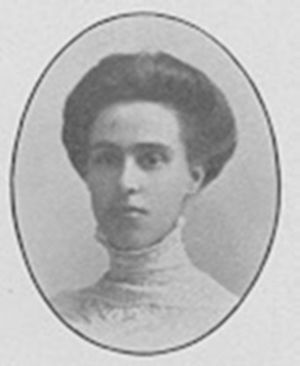Louise Freeland Jenkins facts for kids
Quick facts for kids
Louise Freeland Jenkins
|
|
|---|---|

Jenkins in 1911
|
|
| Born | July 5, 1888 |
| Died | May 9, 1970 (aged 81) |
| Nationality | American |
| Alma mater | Mount Holyoke College |
| Scientific career | |
| Fields | Astronomy |
| Institutions | Yale University Observatory Women's Christian College Hinomoto Gakuen Girl's High School Allegheny Observatory |
Louise Freeland Jenkins (born July 5, 1888 – died May 9, 1970) was an American astronomer. She was known for her important work studying stars, especially those close to our Sun. She also helped put together a major book called the Yale Bright Star Catalogue.
Contents
Her Life as an Astronomer
Early Life and Education
Louise Jenkins was born in Fitchburg, Massachusetts. She loved learning and went to Mount Holyoke College. In 1911, she earned her first degree. Then, in 1917, she received a special advanced degree in astronomy from the same college.
Starting Her Career
From 1913 to 1915, Louise worked at the Allegheny Observatory in Pittsburgh. This was a great place for her to start her journey into studying the stars. After that, she taught at Mount Holyoke College from 1915 to 1920.
Teaching in Japan
Around 1921, Louise moved to Japan. There, she became a teacher at the Women's Christian College. This was a missionary school, and she spent several years teaching there.
In 1925, she returned to the United States because her father passed away. But a year later, she went back to Japan to teach at another school in Himeji, Hyōgo, called Hinomoto Gakuen Girl's High School.
Back at Yale Observatory
In 1932, Louise came back to the US for good. She joined the team at Yale University Observatory. This was a very important step in her career.
From 1942 to 1958, she was a co-editor for the Astronomical Journal. This is a major science magazine where astronomers share their discoveries. Even after all her work, she still loved Japan and visited later in her life.
What Did She Study?
Louise Jenkins was famous for her research on how far away stars are. She used a method called parallax.
Measuring Star Distances
Imagine holding your thumb out and closing one eye, then the other. Your thumb seems to jump! Astronomers use a similar idea, called trigonometric parallax, to measure how far away stars are. They look at a star from different points in Earth's orbit around the Sun. Louise Jenkins used this method to create a valuable list of stars that are within 10 parsecs (about 32.6 light-years) of our Sun. This helped other scientists understand our cosmic neighborhood better.
Looking at Changing Stars
She also studied variable stars. These are stars that change in brightness over time. By observing them, astronomers can learn a lot about how stars work and how they change.
Honors and Legacy
Louise Freeland Jenkins's hard work and discoveries were recognized.
- The crater Jenkins on the Moon is named after her. This is a great honor for an astronomer!
See also
 In Spanish: Louise Freeland Jenkins para niños
In Spanish: Louise Freeland Jenkins para niños

